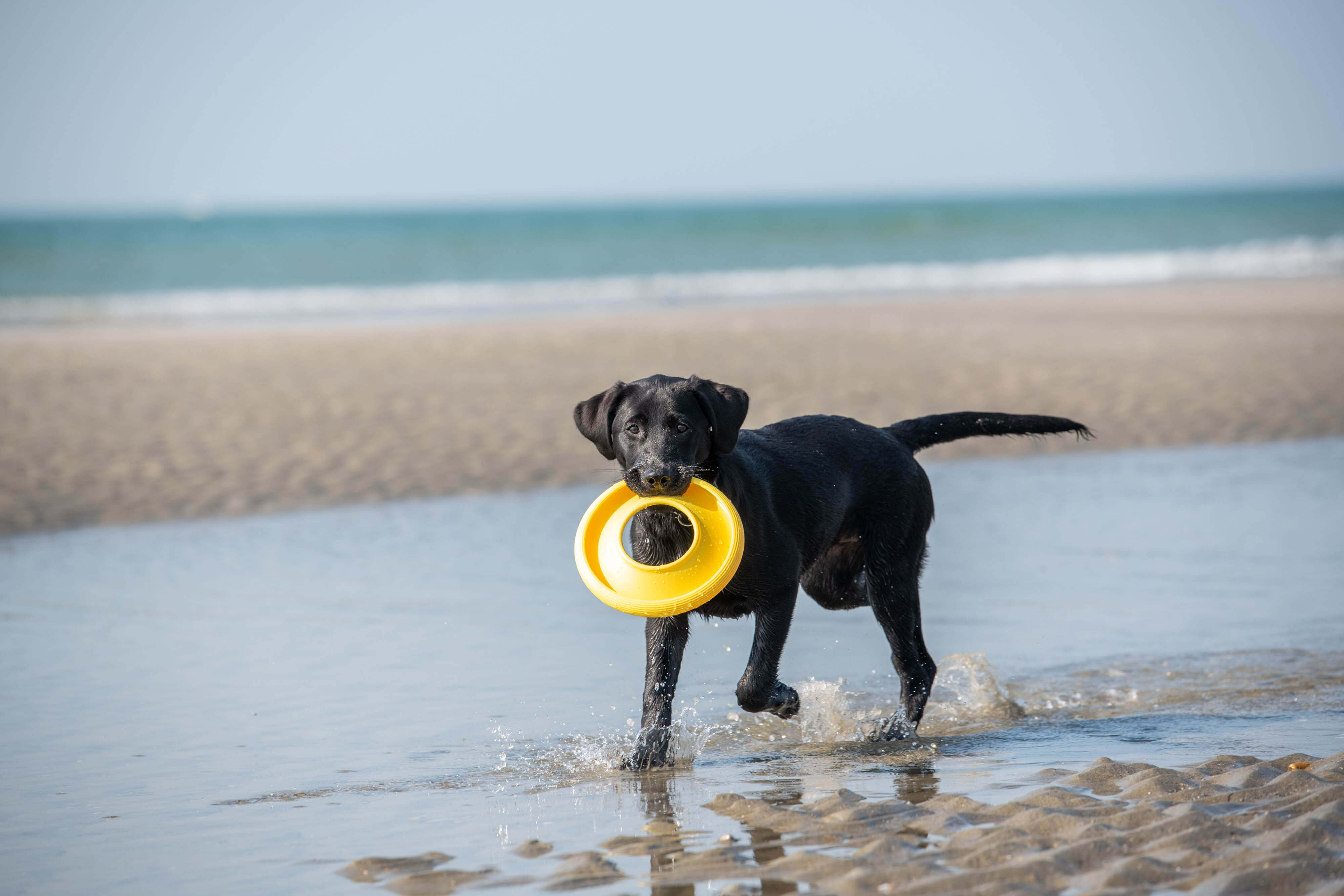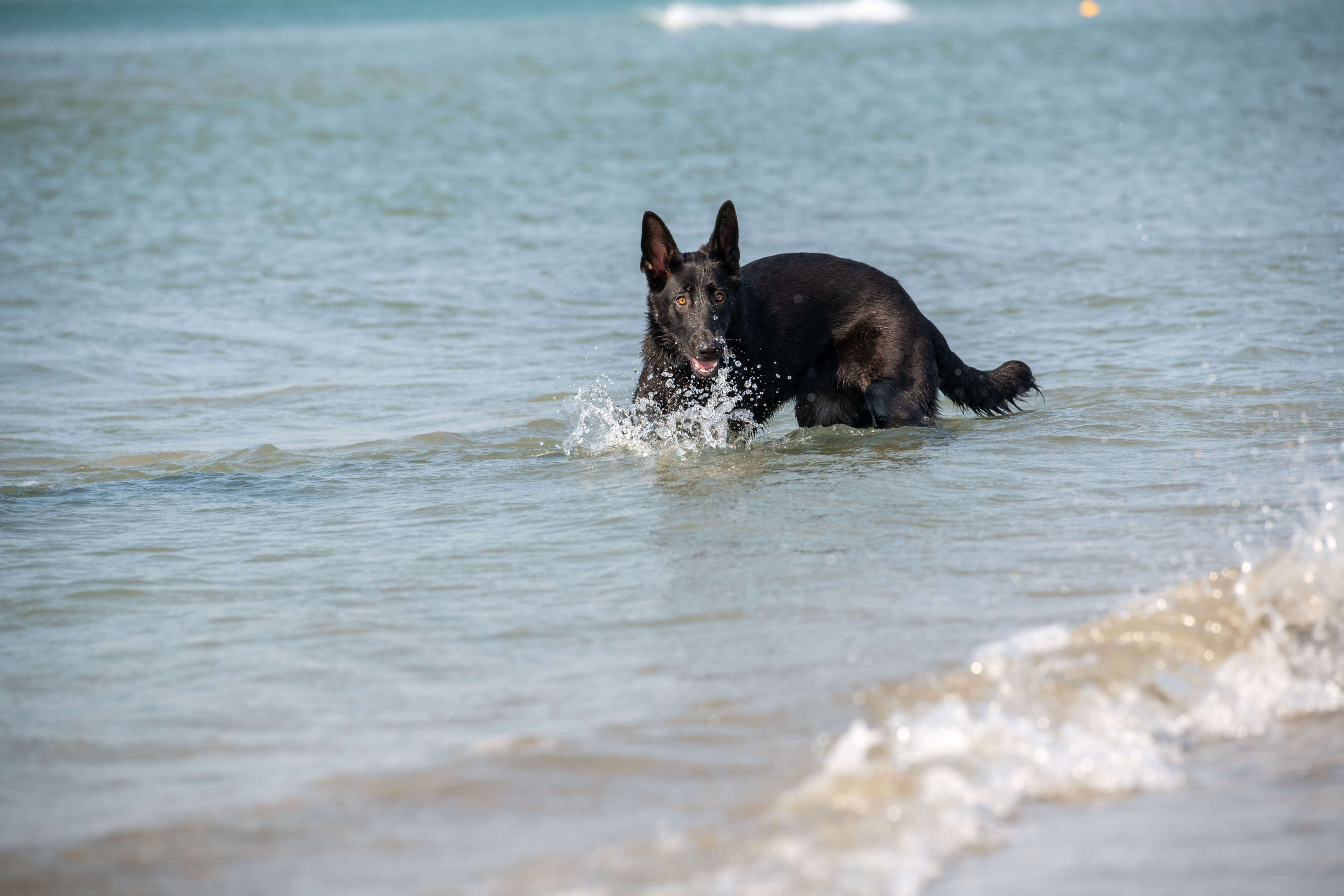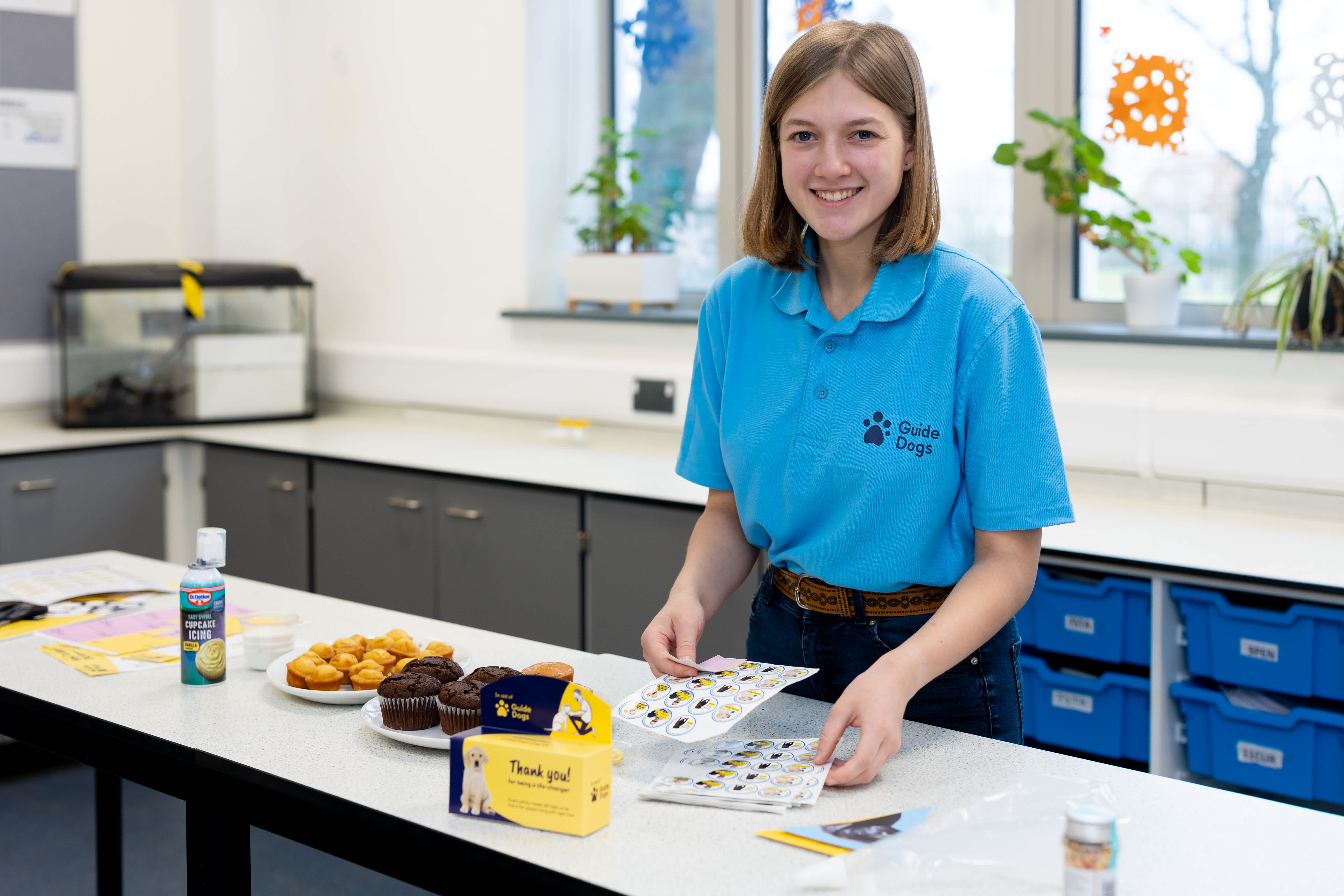As many more beaches across the country reopen to dogs this October, pet owners are eagerly preparing for coastal adventures with their four-legged friends. The return of dog-friendly beaches is an ideal opportunity for dogs to explore new environments , run in the sand, and splash in the waves. However, it’s important to remember that the beach presents unique risks for dogs that owners need to be aware of.
While the beach can be a dog’s playground, it also has its own risks. From appropriate beach-friendly toys, to hazard watch outs, to help pet owners navigate these challenges and ensure their dogs’ safety, Caroline Goulton, a Veterinary Surgeon at Guide Dogs, offers essential advice. By following these expert tips, owners can enjoy a stress free day at the beach, ensuring their canine companions stay happy and healthy.

Vet Caroline's Top Tips
Bring water with you.
Pack plenty of fresh water for your dog to drink throughout the day, as well as a travel bowl. Dog-friendly beach towns will often have water bowls kindly left outside cafes and shops – but you don’t know how clean these are. Multiple dogs will have drunk from these communal containers, so they could be a home for diseases such as kennel cough, canine papilloma or giardia.
Where possible, stop seawater consumption.
Dehydrated dogs are more likely to start lapping up saltwater, which can be very dangerous. Ingesting seawater can cause vomiting and diarrhoea, as this excess of salt will draw water into the intestines. Speak to your vet immediately if you notice your dog becoming lethargic or shaky after drinking seawater.
Bring beach-friendly toys.
Pick bright, floating and waterproof toys that your dog can spot easily in the sea. Vivid yellow is a great pick for the canine eye’s much more limited colour spectrum. Don’t throw toys too far from the shore, especially if the conditions are choppy.

Sand is a menace to all beach goers, and dogs are no exception!
Tennis balls should never be used at the beach as they pick up lots of sand and grit, which is terrible for your dog’s teeth. Sand can also block the bowel if eaten in large quantities. Frisbees are great – they don’t attract much sand and your dog doesn’t have to open their mouth wide to pick them up and risk swallowing seawater
Watch out for hazards.
Seaweed, litter and fish could cause your dog serious problems if ingested, so make sure they leave these well alone. If your dog is unlucky enough to get stung by a jellyfish, contact your vet for advice.

Be aware of your surroundings.
If you are off on a coastal walk, be aware of the tides so you don’t get trapped or stranded by incoming water. Remember that dogs should always be safely on lead around cliffs and sea walls. Sea conditions can change quickly – listen to lifeguards and keep an eye on the weather.
Know your dog’s swimming ability.
Dogs breeds vary wildly on how well they can swim, from web-footed Labradors to non-floating Frenchies. Never push your dog to swim if he isn’t feeling confident and pick somewhere shallow with easy access. And even the most natural swimmers get tired and get into trouble – so be watchful. Swimming, whether that’s in a hydrotherapy pool, a lake or the sea, is an excellent, low-impact exercise though. It works the muscles while supporting a dog’s joints, so can even be an effective element in a doggy weight loss plan if cleared by your vet.
Make sure your dog has a reliable recall.
A beach is a great place for running and socialisation off the lead, providing your dog mixes well with others. There’s plenty of flat open space with no obstacles, so they can really get up to speed and burn off some energy with friends. This is fantastic for their mental health.

Check the temperature.
Some dog breeds are also much more vulnerable to cold water and chilly winds than others. Consider a fleece or coat on winter beach visits if your dog has a finer, shorter coat, less body fat, or is elderly, and keep them out of the sea when they are wearing it.
Rinse down at the end of the day.
Not only will this save your car interior, but this could also prevent an infection. Seawater can be polluted, and gently washing your dog can stop common post-beach problems such as ear and eye infections. You can use a damp sponge to wipe your dog’s face, and be sure to check paw pads for any cuts and scrapes. Dry your dog well and invest in a doggy robe to ensure a warm and comfortable journey home.



